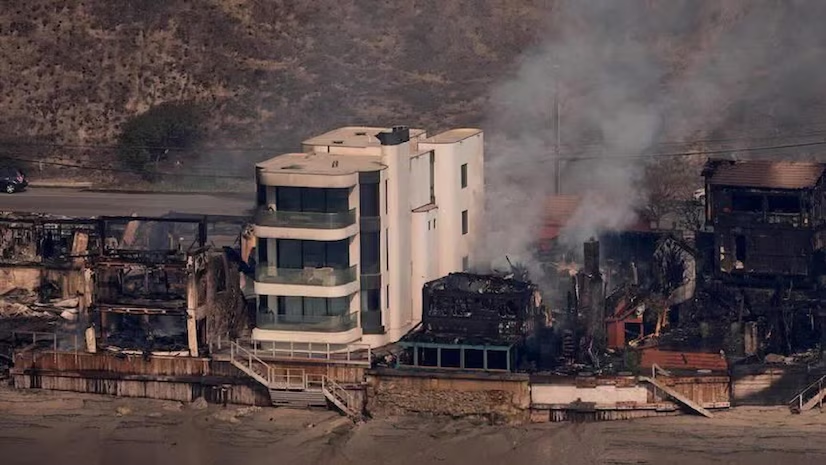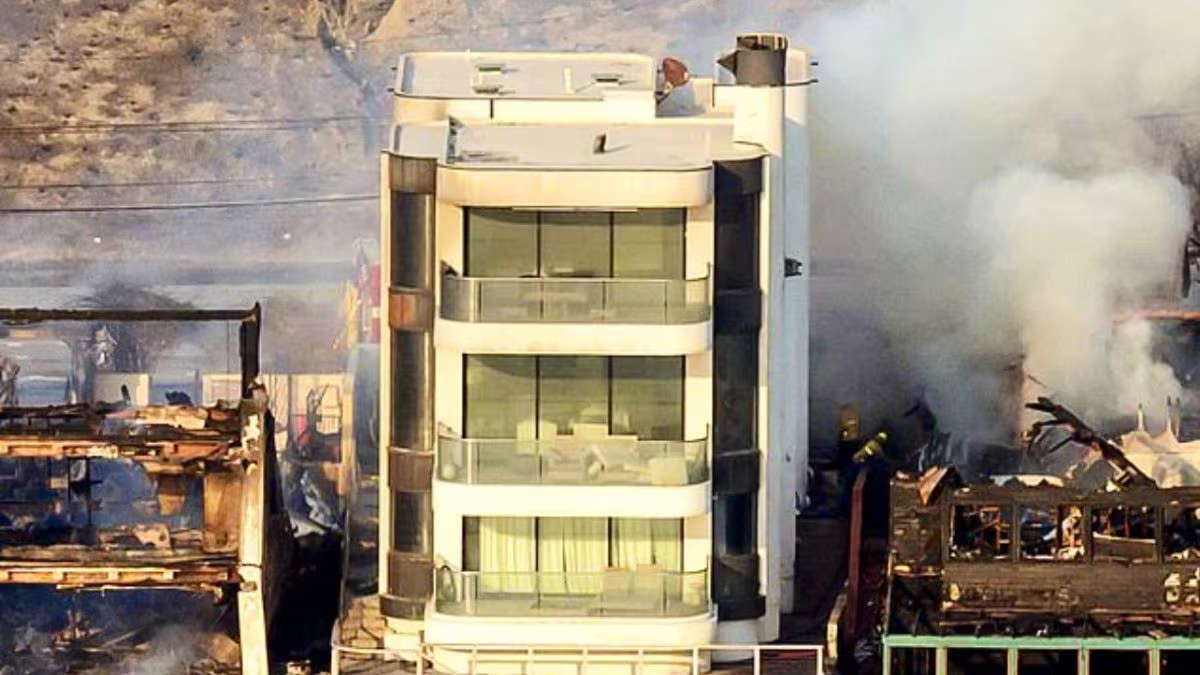This mansion, owned by retired waste management executive David Steiner, is now famously referred to as the “last house standing.” Its survival has highlighted the significance of resilient construction, the limitations of traditional building materials, and the need for a reassessment of architectural practices in fire-prone regions.
As California continues to grapple with devastating wildfires year after year, stories of survival often inspire awe and raise questions about resilience. Among the harrowing tales of loss and destruction, one remarkable story emerged from Malibu, where a $9 million three-story mansion stood unscathed amidst charred ruins.
The “Last House Standing”
The Malibu mansion’s story is one of hope amid despair. As wildfires swept through the area, destroying homes and displacing families, Steiner’s property seemed destined to meet the same fate. Initially, Steiner himself believed the mansion was lost to the flames. However, news footage revealing his intact property amidst the devastation was nothing short of a miracle.
Steiner described his emotional journey as one filled with disbelief and relief. When his wife referred to their property as the “last house standing,” it underscored just how rare and fortunate their situation was.
Despite not being their primary residence, Steiner emphasized his empathy for others who lost their homes, stating, “My heart goes out to those who lost their homes.” His perspective highlights the broader human cost of wildfires, which goes beyond material losses to affect lives and communities.
Read : Man Dressed as Firefighter Robs Home in Los Angeles Wildfire
The mansion’s survival was not just a stroke of luck but the result of deliberate design choices. Its construction incorporated fire-resistant materials and innovative techniques, serving as a testament to the power of foresight in protecting property against nature’s fury.
Fire-Resistant Construction: A Lifesaving Choice
One of the most striking aspects of Steiner’s mansion is its robust construction. Built with fire-resistant materials such as stucco and stone walls, the property also features a specially designed fireproof roof.
These elements were instrumental in shielding the structure from the intense heat and flames of the wildfire. The use of non-combustible materials reduced the house’s vulnerability, ensuring that it could withstand the devastating conditions that surrounded it.
Read : Watch Video of Wildfire That Forced the Evacuation of an Entire Town of Ruidoso in New Mexico
Architectural resilience was further demonstrated in another instance in Los Angeles’ Pacific Palisades neighborhood. There, a home with a solid concrete perimeter wall survived a wildfire due to its design and choice of materials. Architect Greg Chasen attributed the structure’s survival to the strategic use of concrete, which acted as a barrier against the flames.
These examples shed light on the critical role of construction materials and design in mitigating wildfire risks. While Steiner’s mansion serves as a symbol of resilience, it also raises questions about why such practices are not more widespread, especially in regions prone to wildfires.
Rethinking Construction in the US
The dominant use of wood in construction across the United States, particularly in coastal California, has long been a double-edged sword. Wood is lightweight, cost-effective, and earthquake-resistant, making it an attractive choice in seismic regions. However, its vulnerability to fire poses a significant risk, as seen in the aftermath of wildfires.
Historically, the US has been a nation of carpenters, with timber framing becoming the norm due to its abundance and ease of use. This tradition has persisted despite the growing recognition of its limitations in fire-prone areas.

According to the National Association of Home Builders, approximately 90% of homes built in 2019 featured wooden frames. Economic incentives, such as insurance rebates favoring timber construction, further reinforce this preference.
However, the increasing frequency and intensity of wildfires are challenging the status quo. The survival stories of fire-resistant homes, like Steiner’s mansion, are compelling arguments for exploring alternative materials such as concrete, steel, and fire-resistant composites.
These materials, though more expensive initially, offer long-term benefits in terms of durability and safety. The reliance on wood is not only a matter of tradition but also reflects a shortage of skilled labor for alternative construction methods.
A report by Reuters highlighted a significant deficit of skilled carpenters, leading to delays in housing projects and limited options for using materials like masonry or concrete. Addressing this labor shortage is essential for encouraging the adoption of more resilient building practices.
Lessons for the Future
The survival of the $9 million Malibu mansion is more than a story of architectural resilience; it is a wake-up call for communities, architects, and policymakers. As climate change exacerbates the risk of wildfires, the need for proactive measures becomes increasingly urgent.

Investing in fire-resistant materials and designs is not just a luxury for the wealthy but a necessity for ensuring the safety and sustainability of entire communities. Policies that incentivize the use of non-combustible materials, coupled with public awareness campaigns, can drive a shift towards more resilient construction practices.
Additionally, urban planning must account for wildfire risks by creating buffer zones, enforcing stricter building codes, and integrating fire-resistant landscaping. These measures, combined with advancements in construction technology, can help mitigate the devastating impact of wildfires in the future.
Steiner’s mansion stands as a powerful reminder of what is possible when foresight meets innovation. While the house’s survival is a testament to resilient construction, it also underscores the importance of collective action in addressing the challenges posed by wildfires. By rethinking traditional construction practices and embracing modern solutions, communities can build a safer and more sustainable future.
The “last house standing” is not just a story of survival but a blueprint for resilience in the face of adversity.

